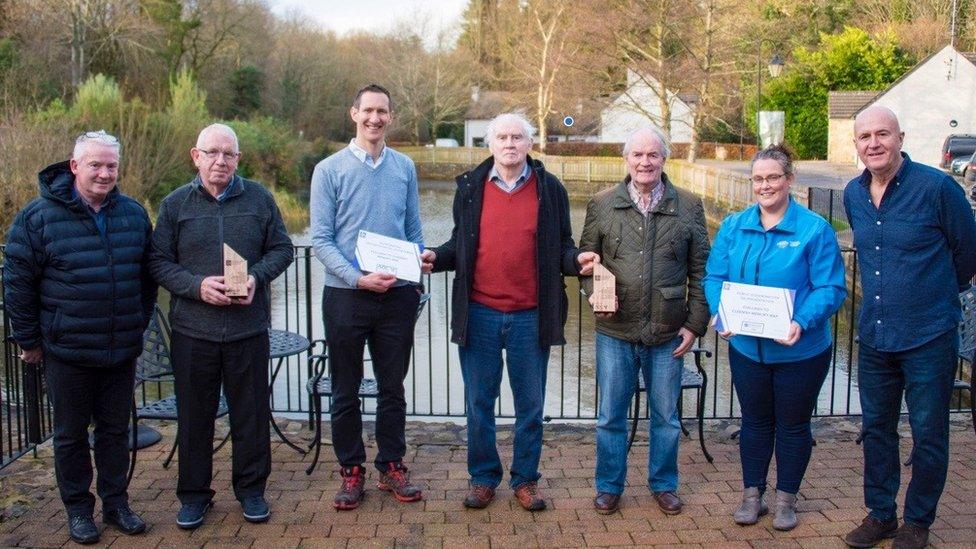Archaeology: Lurgan volunteers dig in at churchyard site
- Published
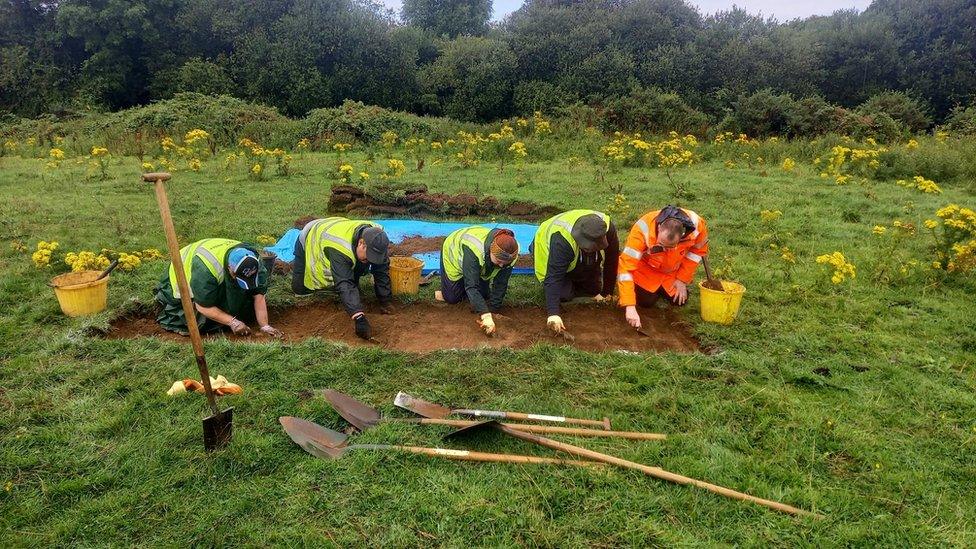
The site in Lurgan is believed to have been used as a graveyard until the 1840s
An archaeological dig is taking place in County Armagh amid speculation that it is the site of an old churchyard.
Kilmocholmóg, which means 'church of my little Colman', is being excavated after an investigation found there may be stone features underground.
The site in Lurgan is believed to have been used as a graveyard until the 1840s, when the train line from Belfast to Armagh cut across it.
Locals believe the last person buried there was a woman from Tyrone.
It is thought her coffin had to be carried across the railway line.
The dig, which involves archaeologists and members of the community, is taking place from 22 to 27 August.
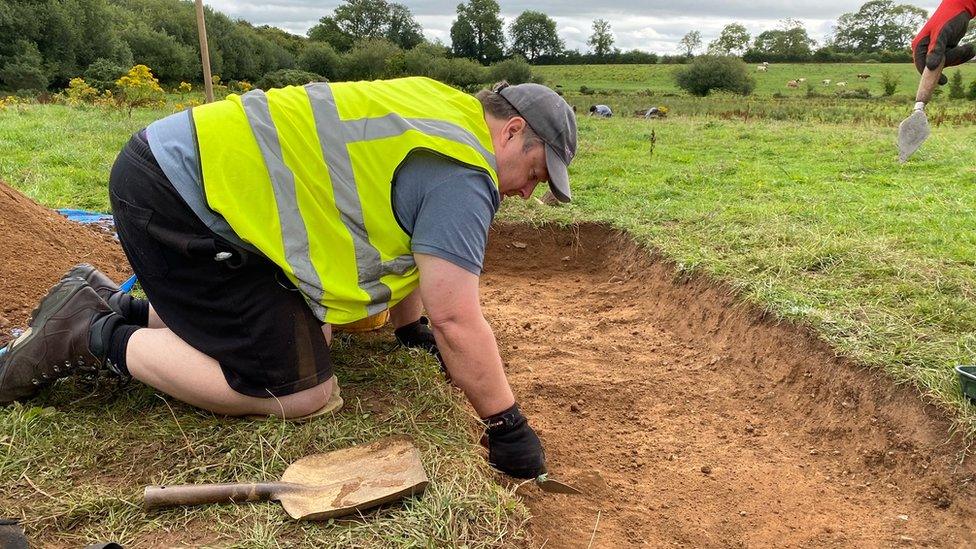
Volunteer Daniel Miller is realising a dream through the project
For volunteer Daniel Miller, it is a once-in-a-lifetime opportunity.
"I've had a bucket list that I made before it was popular to make a bucket list," Mr Miller said.
"One of the items on the list was to take part in an archaeological dig."
Daniel, who works in IT, is realising a childhood dream by taking part.
"I've always been obsessed with archaeology," he said.
"I'd always thought I missed my calling by going into IT rather than doing something like this."
Mr Miller said he was intrigued as to where the church might lie.
"Me and my wife have been going: 'I bet it's there, I bet it's there,'" he said.
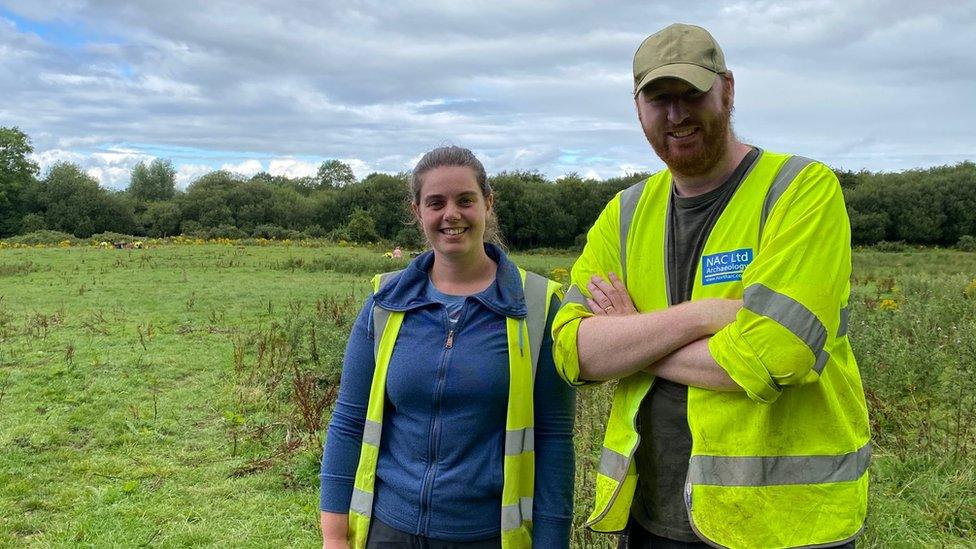
Archaeologist Katy McMonagle, left, said it is not clear what lies at the site
The excavation has gone ahead following ground penetrating radar surveys carried out by Queen's University Belfast indicated stone features of interest.
The surveys were commissioned by Lurgan Township Heritage Scheme and funded in part by the Department for Communities' Historic Environment Division.
Archaeologist Katy McMonagle said she was excited about the dig.
"The most exciting thing about the project is that we don't really know what's there yet," she said.
"We won't be looking for bodies or anything - we're more looking for the church building."
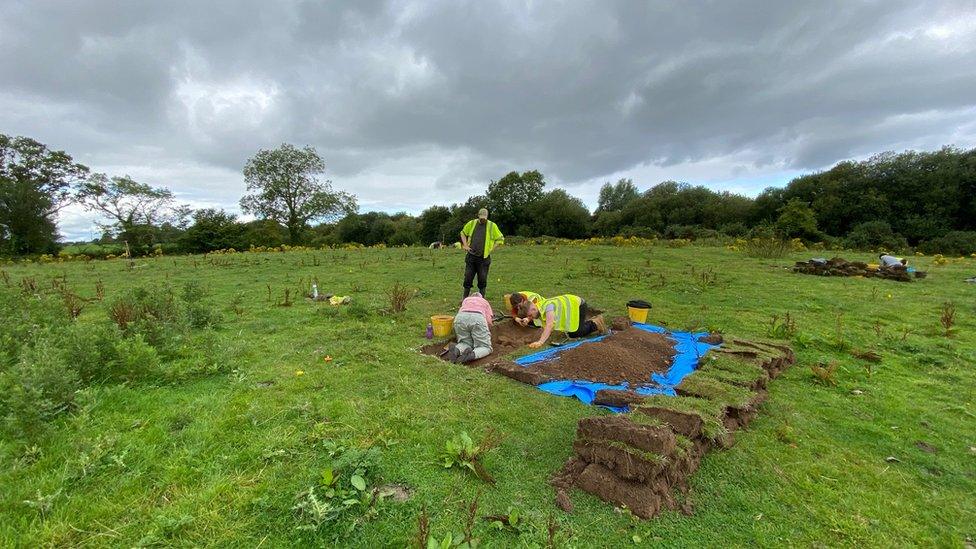
Up to 20 volunteers are taking part each day of the dig
Ms McMonagle said it was great to get the community involved, with up to 20 volunteers taking part each day.
"At the end of the day, it's their local tradition, their history," she said.
"Until we get out there, we don't even know how deep we'll be digging. It'll be all new for us too."
Lurgan historian Dr Francis McCorry has long theorised that an early church could be buried at the site - perhaps dating back to 600AD.
"We could get so much information even from the style of the building," Ms McMonagle said.
On just the second day of the dig, volunteers had already uncovered some artefacts including Neolithic flint, pottery from numerous centuries and slag which suggests iron work in the area.

Volunteers have already uncovered some artefacts including Neolithic flint, pottery from numerous centuries and slag
Ms McMonagle explained: "It's quite simple: good land is good land. It is no surprise that we are also finding pieces from eras far beyond that of the church.
"It will have had numerous uses through the centuries."
Using mapping to target areas, the dig has also produced what the archaeologists believe may be remnants of a collapsed wall.
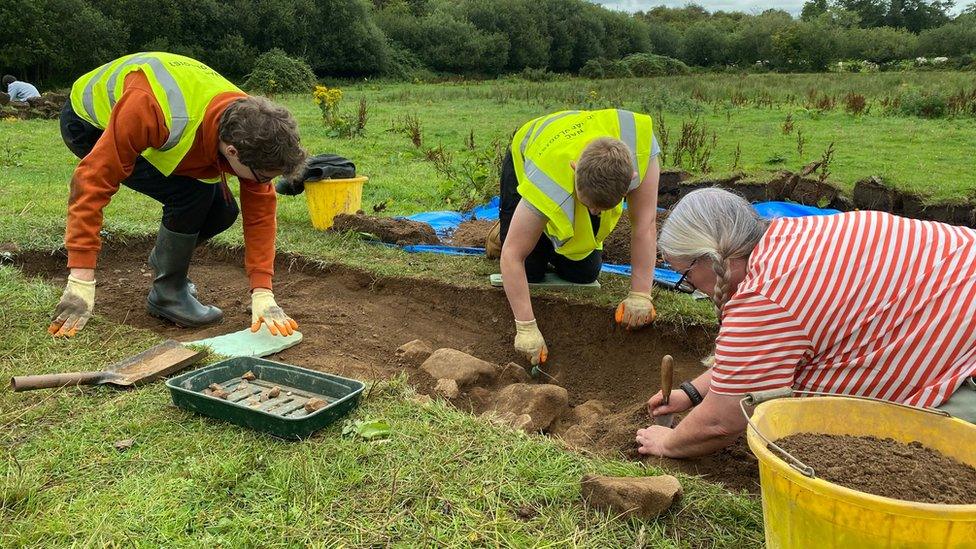
A formation of rocks has been found which archaeologists believe may form part of a collapsed wall
David Weir is a historian who works for Lurgan Township Heritage Scheme, which organised the dig.
"You'd be putting something on the map that's not there at the minute," he said.
"You don't get to do that every day."
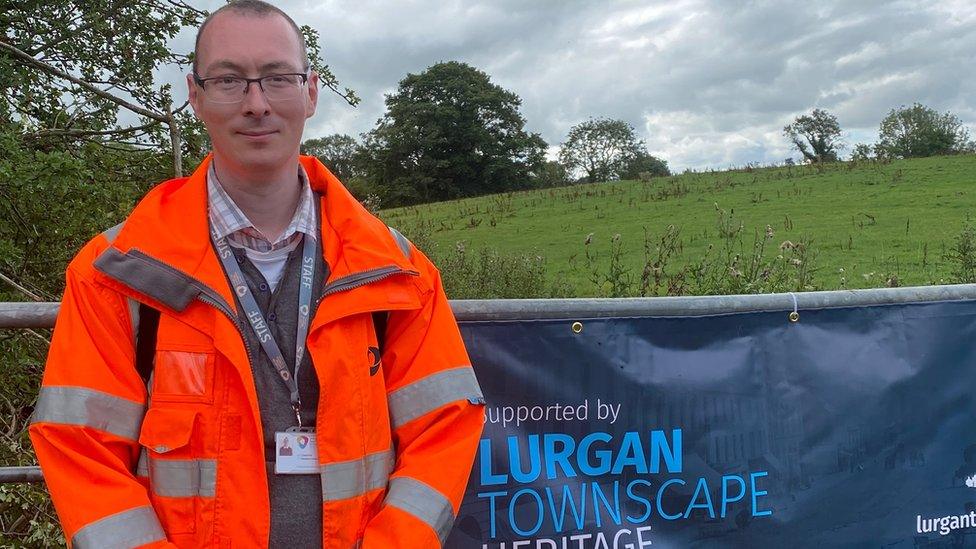
Historian David Weir works for Lurgan Township Heritage Scheme
Mr Weir said he had always been fascinated by the stories of coffins being carried over the railway line, and that a discovery would "vindicate the research of some historians in the area".
The project is funded by the Armagh City, Banbridge and Craigavon Borough Council and the Lottery Players, through the National Lottery Heritage Scheme.
Related topics
- Published27 March 2022
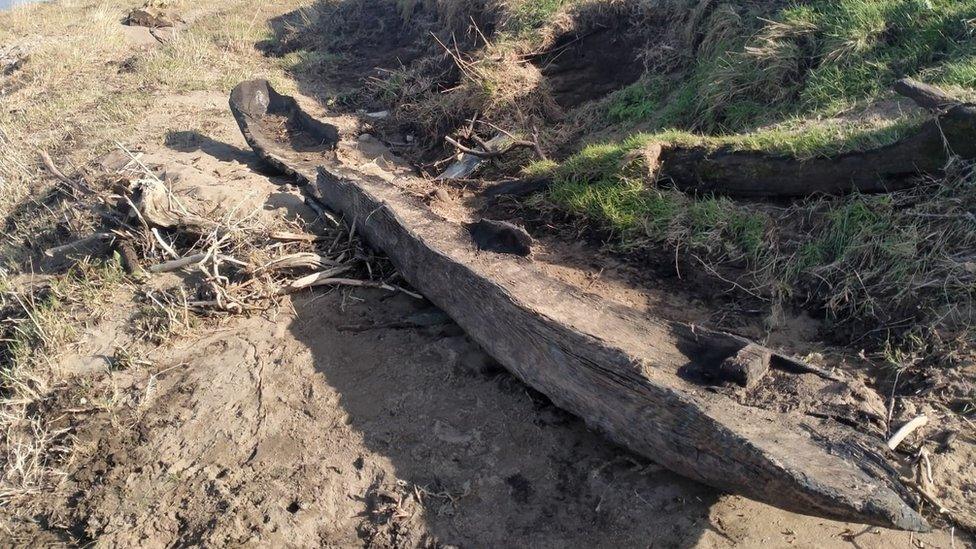
- Published26 December 2021
